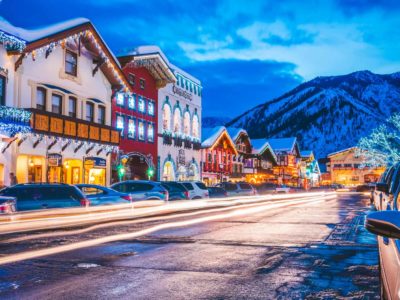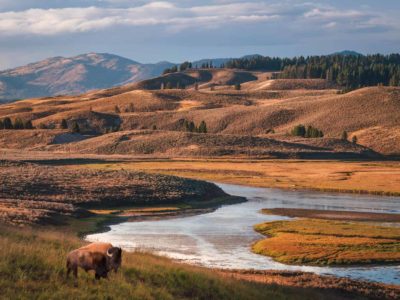It is one of the largest volcanic systems on earth and the best hikes in Yellowstone National Park take you deep into its wonders. Yellowstone sits on top of a supervolcano that’s had 3 massive eruptions. Each eruption left a memory in the form of calderas that we can see today creating one of the most beautiful landscapes in the United States. Yellowstone is America’s first national park and has been attracting outdoor lovers to view the world’s largest collection of geysers including Old Faithful since 1872.
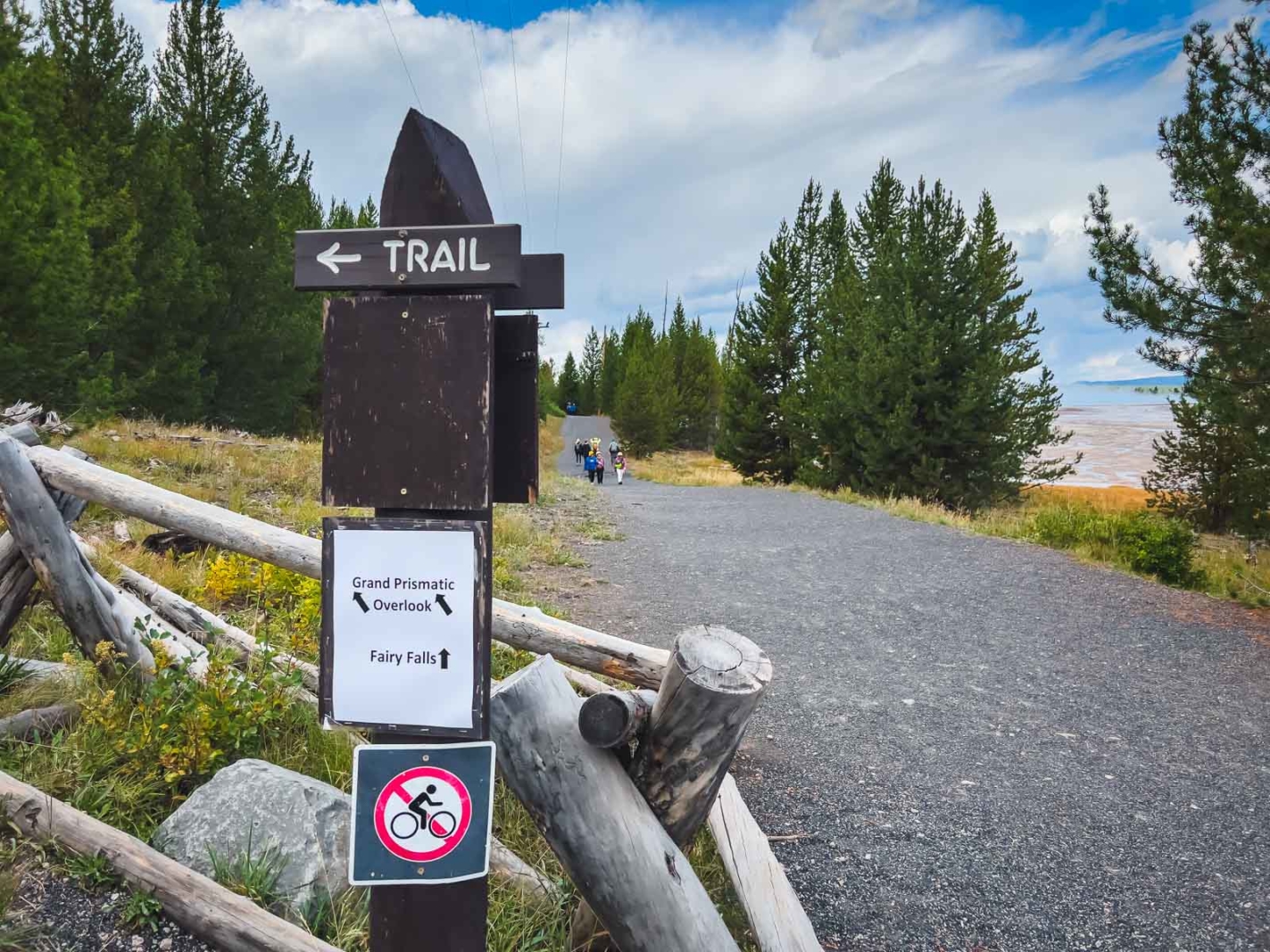
But there is so much more to Yellowstone NP. With 2,221,766 acres to explore, Yellowstone is a hiker’s paradise.
The bulk of Yellowstone National Park can be found in the northwest corner of Wyoming, but it also crosses into Montana and Idaho.
Calderas are formed when a volcano erupts and the space, where the lava used to be under the volcano, becomes empty. Since nothing is holding up the volcano anymore, it collapses, and that creates a hollow. Three major hollows sit in Yellowstone National Park, one of them holds Yellowstone Lake.
Table of Contents
Hiking in Yellowstone National Park
Most people enter Yellowstone via the Northeast Entrance Road which gives you access to the park and connects to five other roads. You’ll catch this highway coming in from Maine and once you enter, you’ll feel like you’ve entered a whole new world – and it kind of is. Now, let’s get into the best hikes at Yellowstone.
1. North Rim Trail
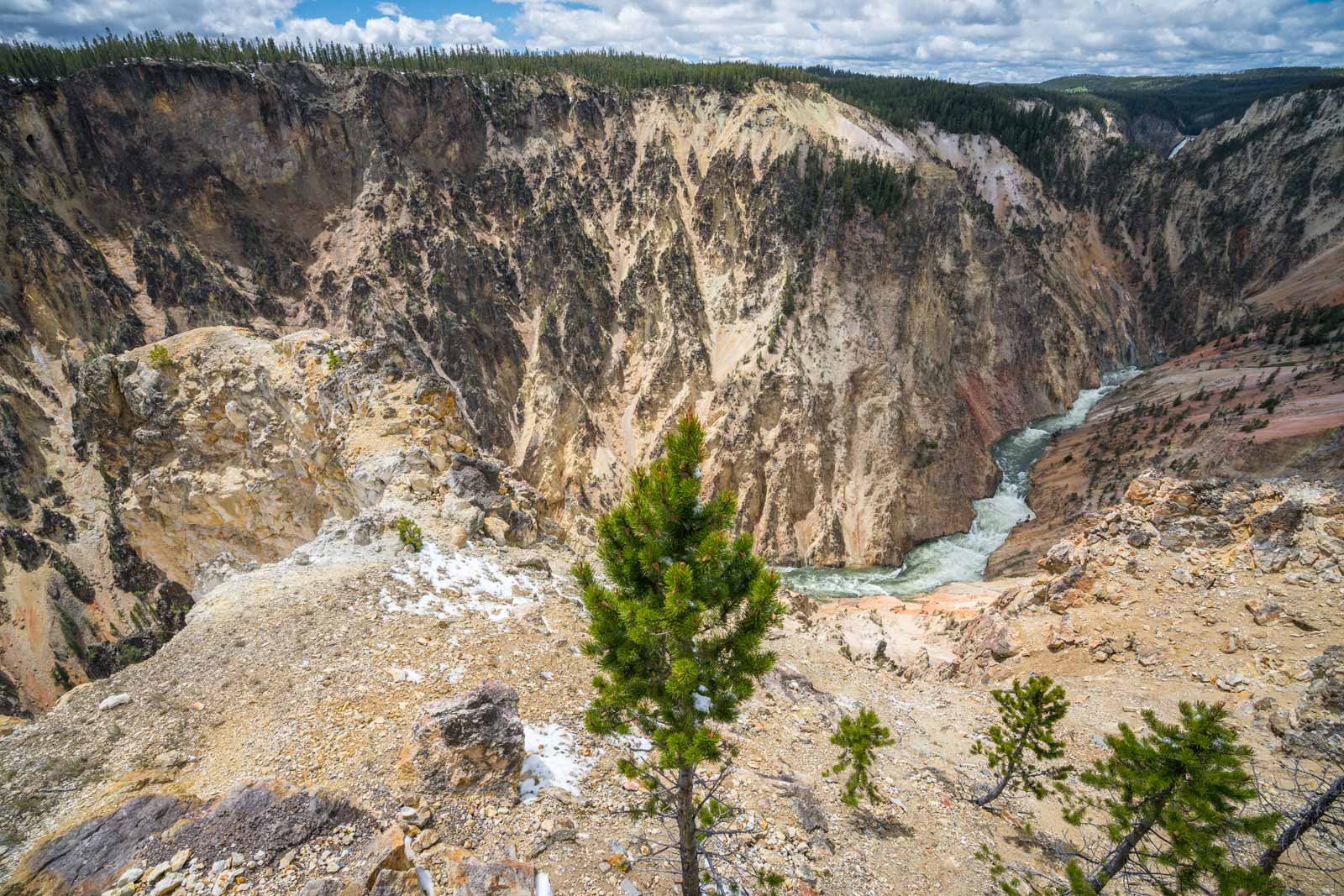
The North Rim Trail is known as the Grand Cayon of Yellowstone National Park. This hike will give you incredible views and is pretty easy to boot. This is a 7.6 mile out and back trail with a 250 feet elevation gain. You can start off your leisurely trek at Inspiration Point where the trail starts.
As the name suggests, you get to walk along the north rim of what they call the Grand Canyon of the Yellowstone River and you do that all the way to Lookout Point. From here you get to see the pounding Lower Falls. Continue on and you’ll see Upper Geyser Basin Falls, Cascade Creek, and Crystal Falls as well as Firehole River which runs through Upper Geyser Basin. This is a great hike for families and is made up of paved and unpaved sections.
Trail Details
- Distance: 7.6 Miles
- Difficulty: Easy
- Elevation Gain: 250 ft
2. Fairy Falls Trail
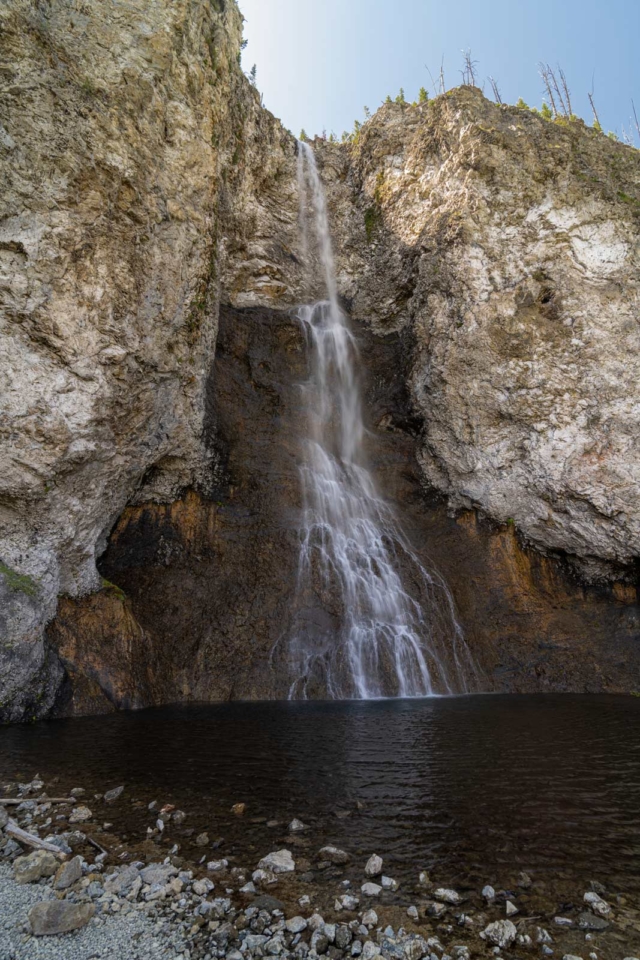
The blues and greens and rainbows that seem to float off Fairy Falls trail definitely do justice to the name. You’re going to start your hike off at the Fairy Falls trailhead which you’re going to find near Midway Geyser Basin.
There is a parking lot at the trailhead, but it’s tiny so fills up fast. You can also park at Fountain Flat Drive instead. The out and back trail is a 5-mile trip and during that trip, you get to go out on the Grand Prismatic Spring Overlook for some truly sensational views of the Grand Prismatic Spring.
After that, you continue on to Fairy Falls Creek and Fairy Falls but that’s not all. You can continue on for another 15 minutes or so and come up on the spectacular Imperial Geyser and Spray Geyser
Trail Details
- Distance: 5 Miles (7.7 km)
- Difficulty: Easy
- Elevation Gain: 170 ft (52m)
3. Midway Geyser Basin Trail
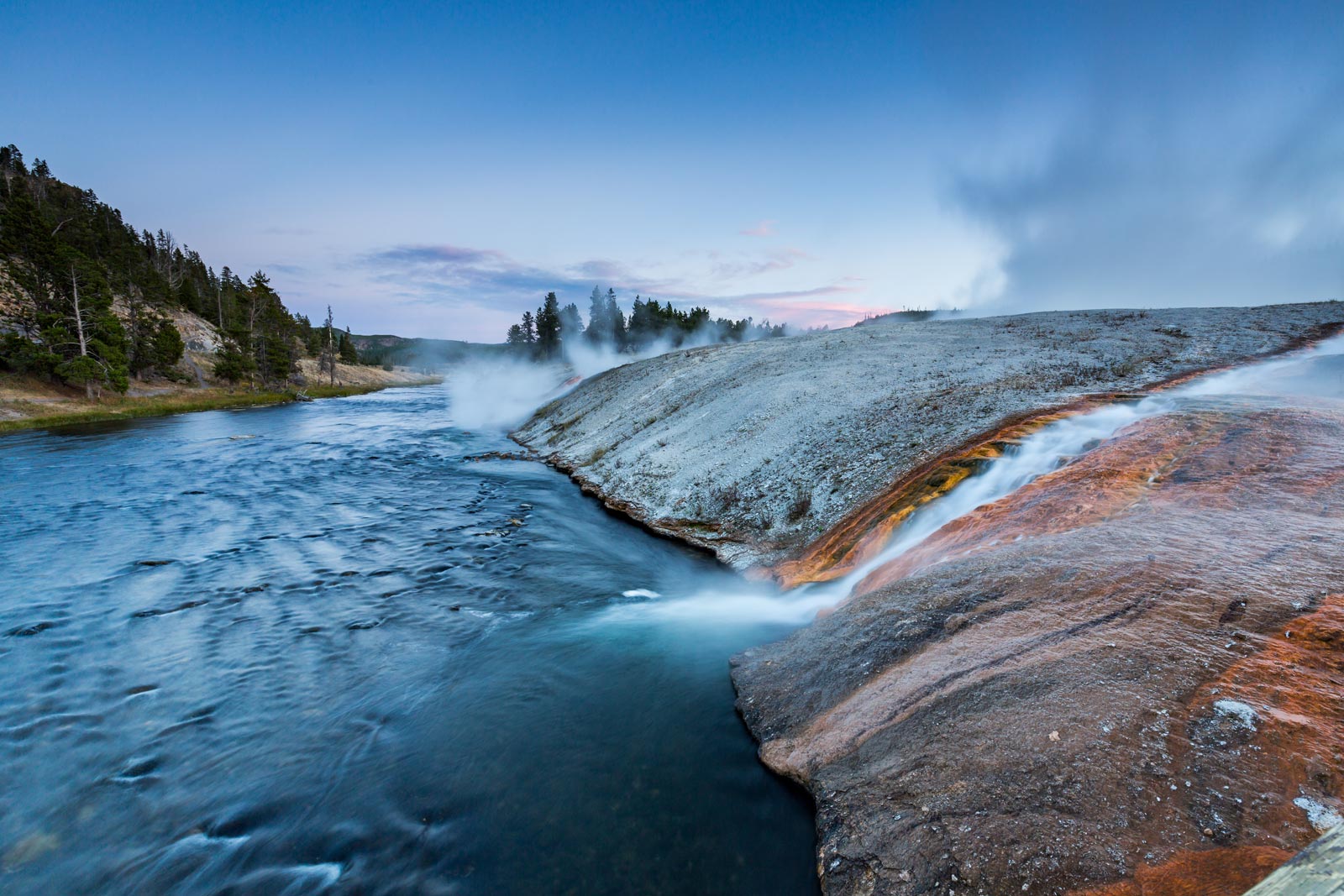
The Midway Geyser Basin Trail, also known as the boardwalk trail, is short and sweet, coming in at just 0.8 miles. It is often called a boardwalk trail because of all the boardwalks you get to traverse as you get up close and personal with the Grand Prismatic Spring.
The purples, blues, and pinks seem even brighter down closer to the spring than they do from the overlook. However, the overlook is still worth a visit because it gives you a different perspective. You should be aware that this is a particularly busy trail so getting there early is a good idea.
Trail Details
- Distance: 0.8 Miles (1.3 km)
- Difficulty: Easy
- Elevation Gain: 55 ft (17m)
4. Specimen Ridge Trail
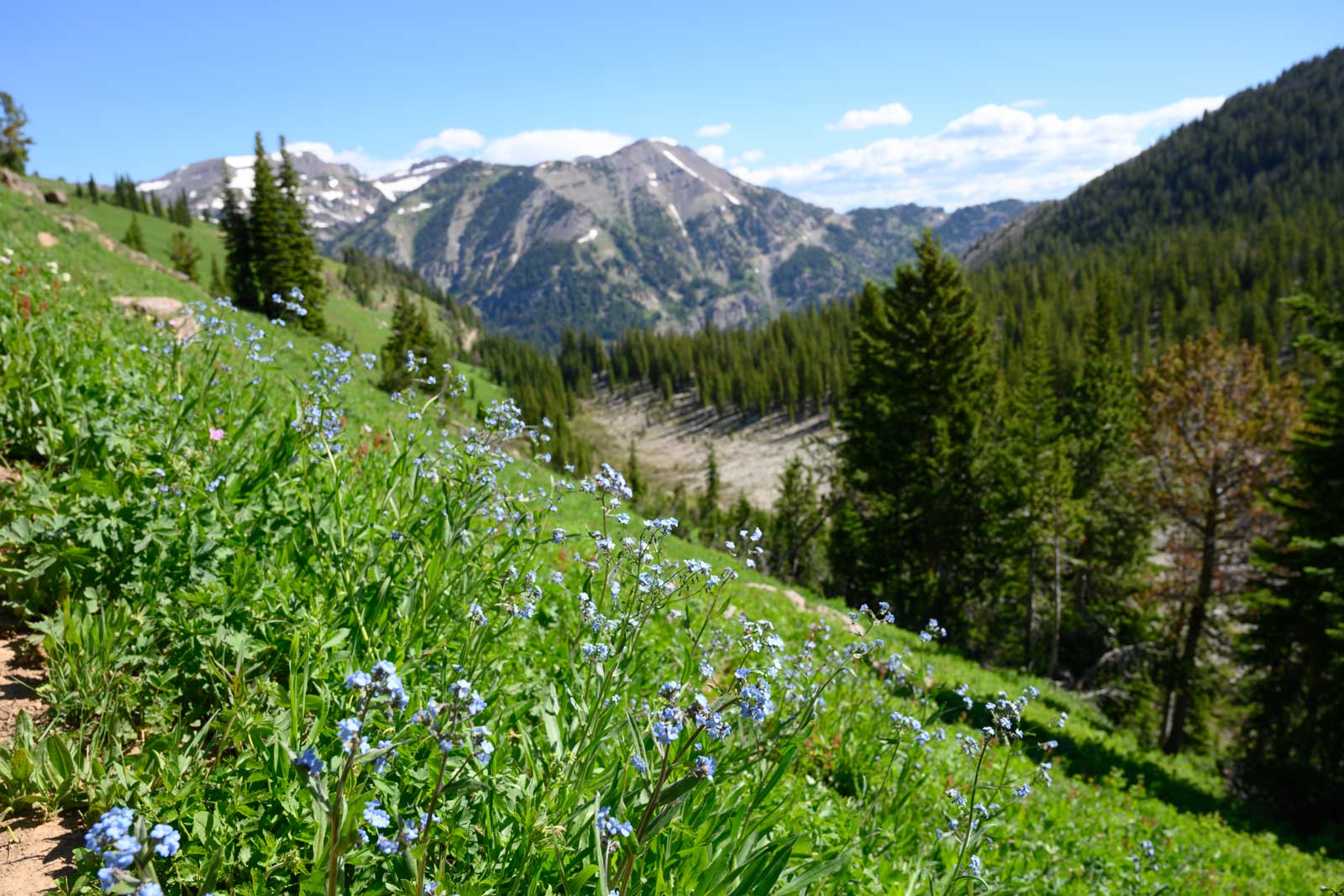
This is a 17-mile trail with an elevation gain of 3800 feet. It is considered one of the more difficult trails at Yellowstone National Park. For those that choose to make the trek, there are big rewards. You’ll see wildlife like bison, bears, bighorn sheep, and antelope all over the place.
Once you finally hit the top you’re treated to some pretty incredible views of Yellowstone. You should pack along plenty of water because you will get very, very thirsty during the sunny time of day as there is no shade. You will also need to bring a map and bear spray.
Trail Details
- Distance: 17 Miles (1.3 km)
- Difficulty: Difficult
- Elevation Gain: 3800 ft (1180m)
5. Lone Star Geyser Trail
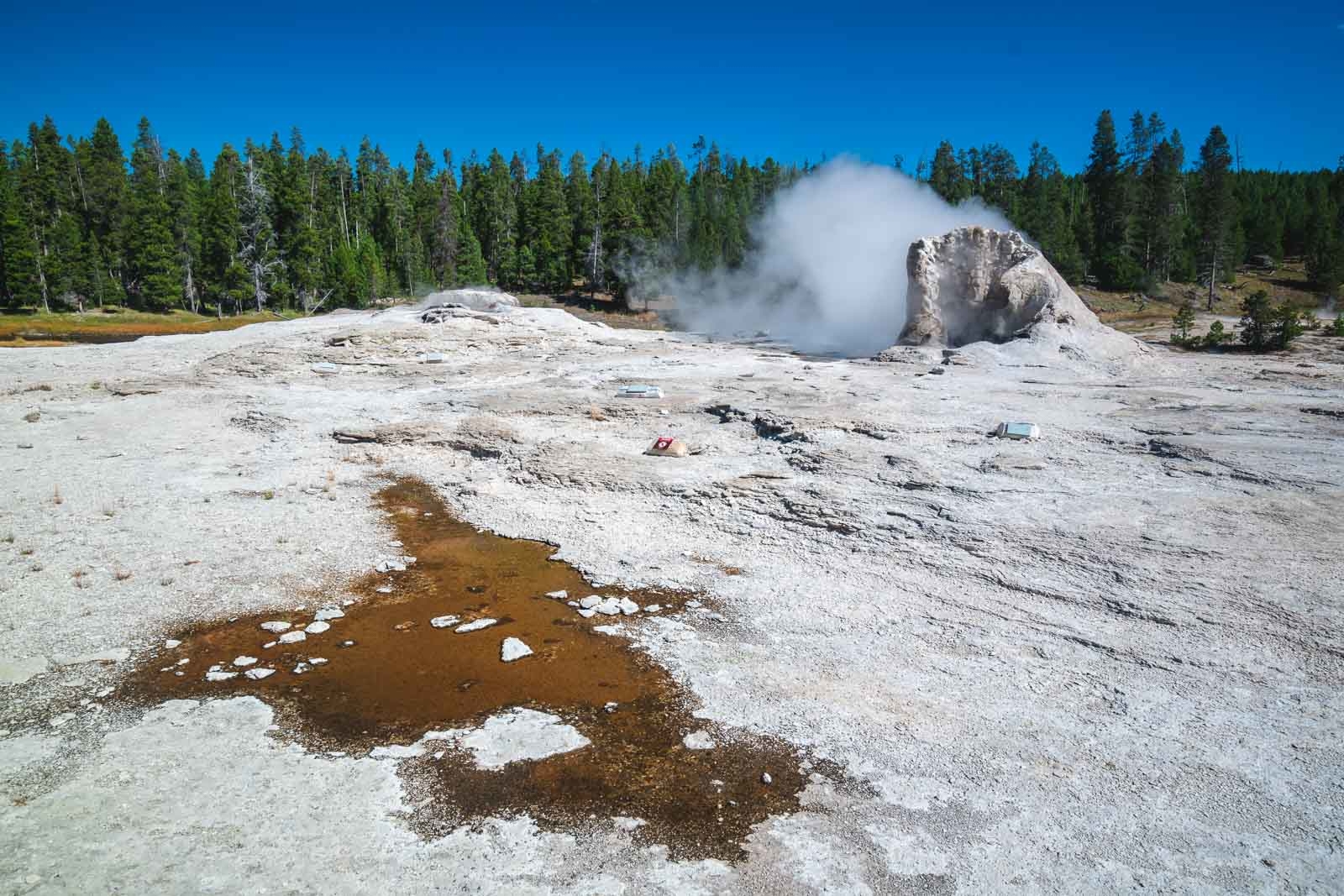
The Lone Star Geyser Trail is a 5 and a half mile out and back hike and is considered pretty easy and flat. It has just a 121-foot elevation gain and the path is paved. You get to mosey along Firehole Creek before hitting the geyser payload.
The trail can sometimes be closed due to wildlife so you just check on that before your trip to Yellowstone National Park. The geyser erupts every 3 hours and lasts for around 20 minutes. Bears do frequent the area so it’s a good idea to carry bear spray with you.
Since everyone wants to see the Lone Star Geyser, this is one of the busier hikes in Yellowstone. That means it is definitely a good idea to head out early if you want to have the space to yourself. Alternatively, you can visit this part of Yellowstone toward the later part of your day.
Trail Details
- Distance: 5.5 Miles (8.5 km)
- Difficulty: Easy
- Elevation Gain: 121 ft (37m)
6. Observation Point Trail
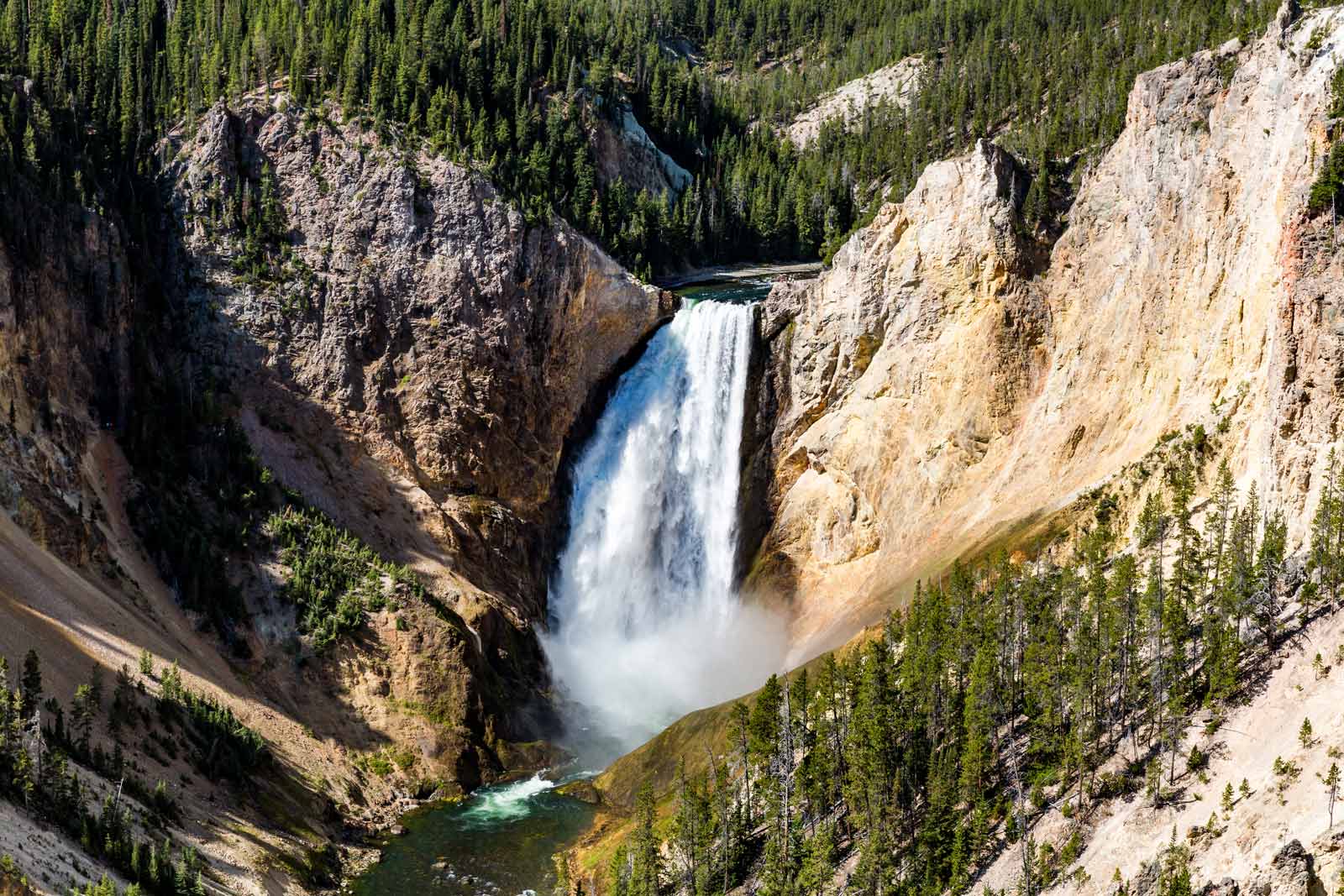
The Yellowstone Observation Point Trail is a one-and-a-half-mile-long out-and-back trail. There is a 262-foot elevation gain on this moderate-level trail. Although it is quite short and considerate moderate in terms of difficulty the incline is pretty steep.
However, when you get to the top you get a chance to see Old Faithful from a completely different perspective. Although it is a popular trail, if you get really early or late, you’ll have the place to yourself. You can check with the Faithful Visitor Education Center to learn about the geyser.
Trail Details
- Distance: 1.5 Miles (2.4 km)
- Difficulty: Easy
- Elevation Gain: 262 ft (80m)
7. Lamar Valley Trail
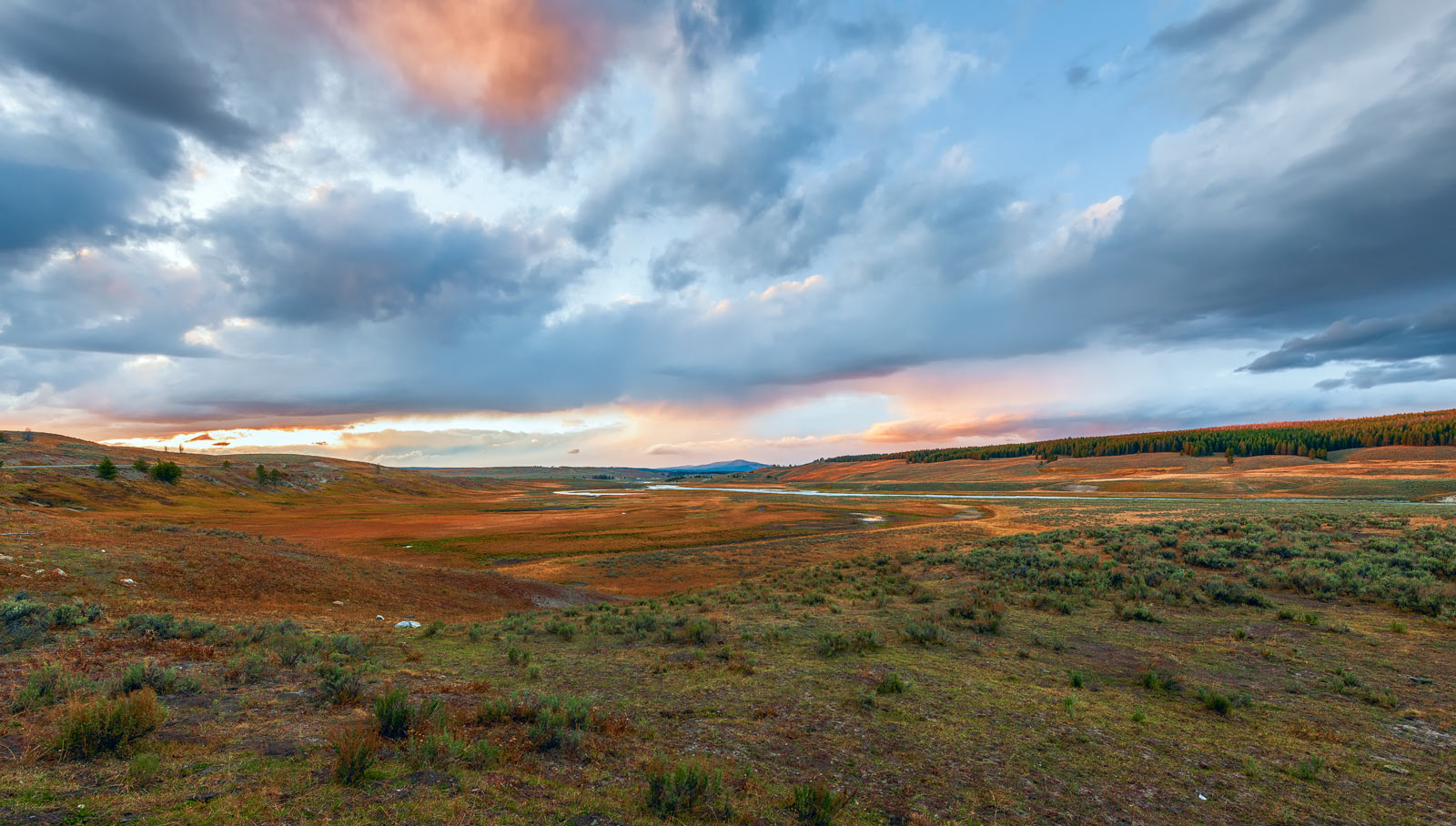
The Lamar River Trail is the easiest hike to do in Lamar Valley. This 5-mile out and back trail is pretty easy as there are just a few inclines but for the most part pretty flat. You will experience an elevation gain of 100 feet.
This is one of Yellowstone National Park’s most perfect places to spot wolves. Additionally, if you look out on Lamar Valley you’re going to see all sorts of other wildlife like pronghorn, elk, and all sorts of birds.
Lamar Valley is also a favorite hangout for Yellowstone National Park’s bison and you might even spot a grizzly bear. You can start your trek out at Soda Butte trailhead and that will take you right out to Lamar River where you can enjoy a picnic before heading back.
Trail Details
- Distance: 5 Miles (11.4 km)
- Difficulty: Moderate
- Elevation Gain: 100 ft (213m)
8. Point Sublime Trail
This is one of the more moderate hiking trails at Yellowstone National Park. It is a 3-mile trail that will take you through some beautiful forests edged by lookouts. You will start out at Artist Point where there are a lot of crowds but the further along you go, the fewer people you will see.
You should note that the lookouts along the way provide you as good a lookout as the Point Suble lookout at the end, so do stop and enjoy the views all along the way. There is a 341-foot elevation gain but the overall effect is quite pleasant as there aren’t any sharp inclines.
Trail Details
- Distance: 3 Miles (4.5 km)
- Difficulty: Moderate
- Elevation Gain: 341 ft (104m)
9. Brink of the Lower Falls Trail
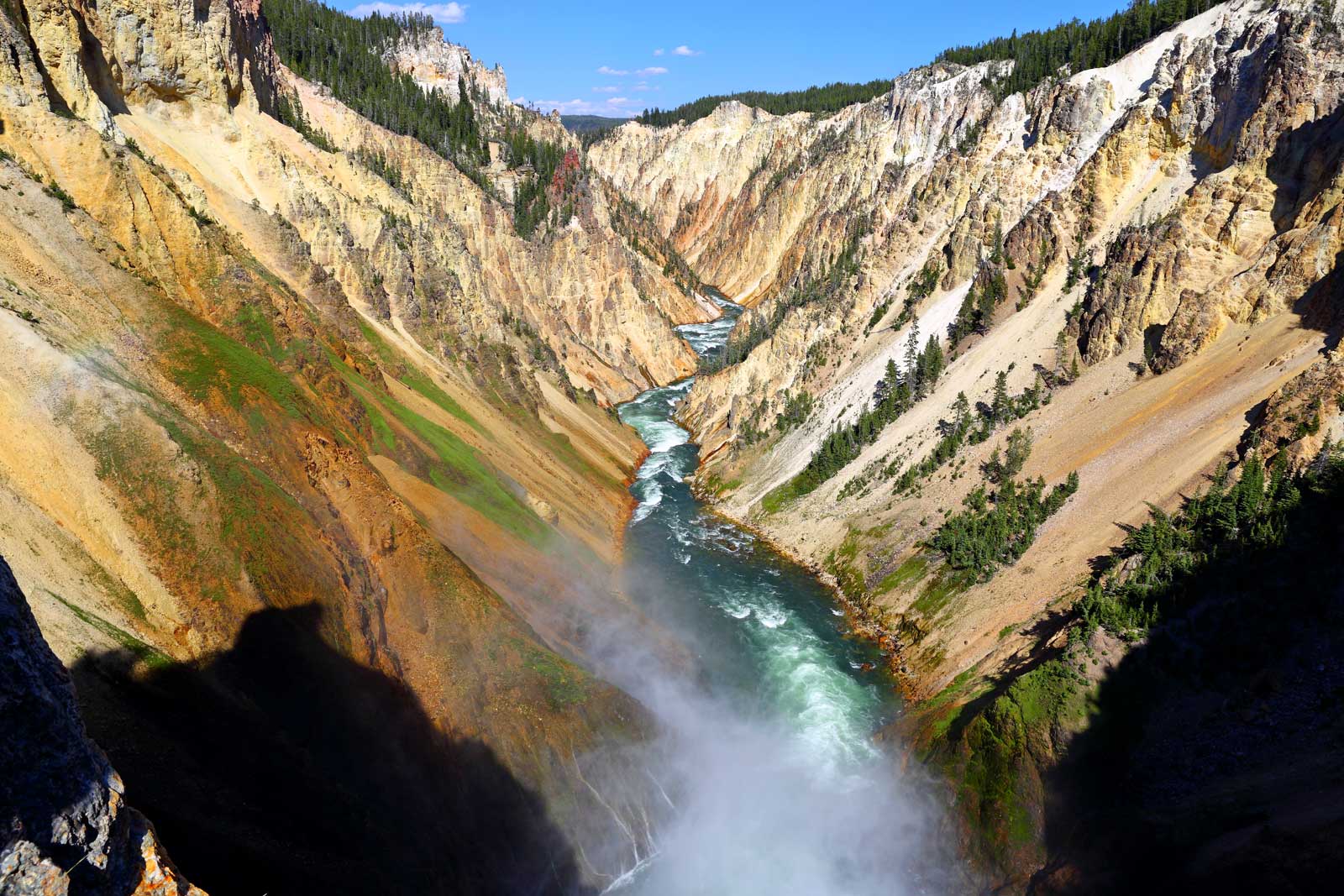
You can get to this trail by going Grand Loop Road to Canyon Village. There is a parking lot that you can use, but as with most parking lots in Yellowstone National Park, it fills up quickly.
The hike is just 0.7 miles with a 265 feet elevation gain. It’s a little steep but is paved so it’s a pretty easy climb. When you get to the Lower Falls Lookout you are surrounded by the canyon and the views of a spectacular waterfall.
To get to this overlook there are some switchbacks that you’re going to have to traverse. They shouldn’t be very difficult if you have at least some experience with hiking, but it is something to note if you don’t.
Trail Details
- Distance: 0.7Miles (1.1 km)
- Difficulty: Moderate
- Elevation Gain: 265 ft (80m)
10. Mammoth Hot Springs Trail
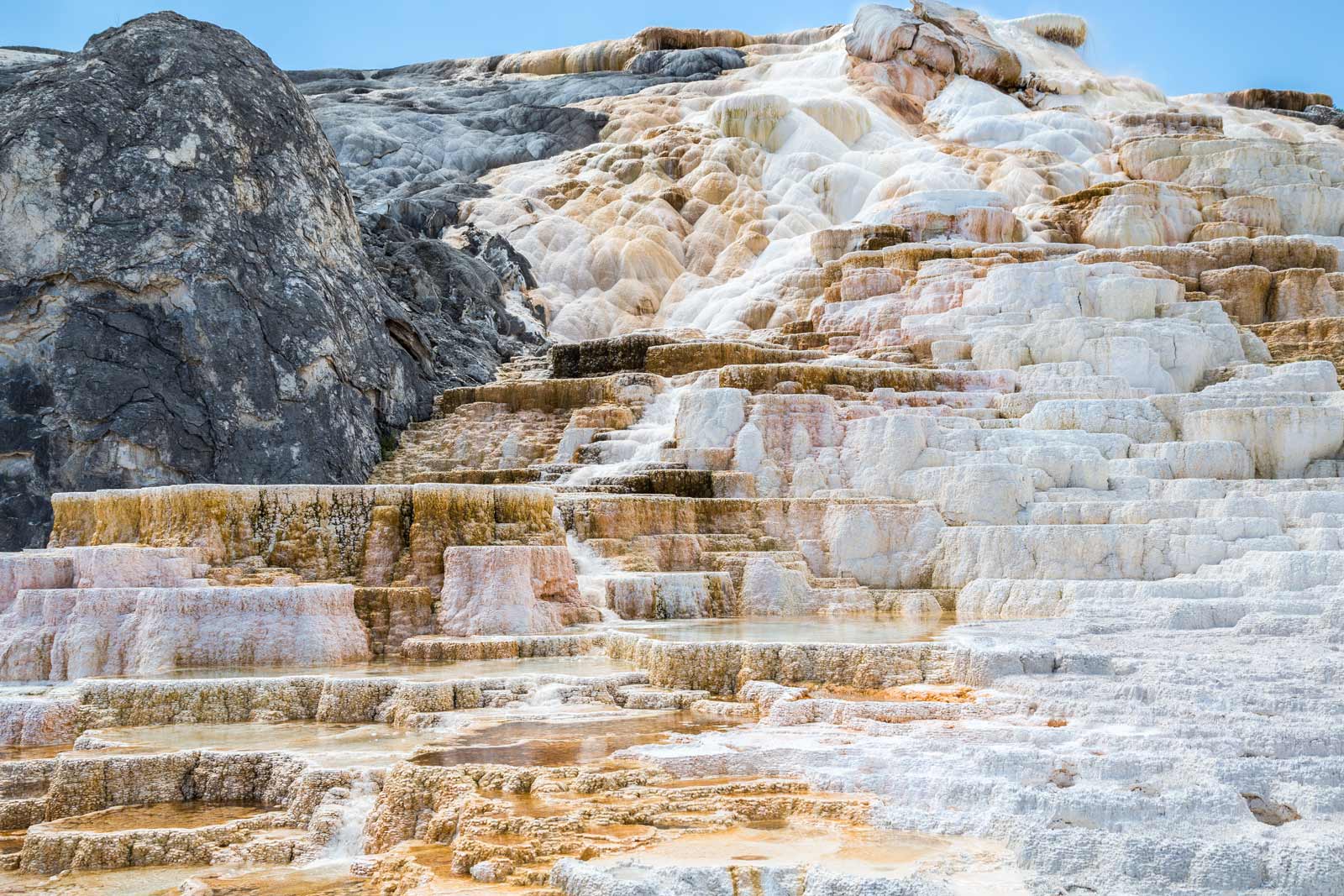
This 3.5-mile Mammoth Hot Springs Trail with a 500-foot elevation gain. The is an easy to moderate level trail and has a massive boardwalk situation. The interlinked boardwalks take you around a large area of geothermal hot springs.
Depending on the time you go, the hot springs do give off a lot of steam so you may or may not get a clear look but you’ll get a look nonetheless.
The Mammoth Hot Springs trail will take no more than 45 minutes and is a great way to break up the day between some of the more strenuous hiking trails. They are also a good place to have a picnic lunch.
Trail Details
- Distance: 3.5 Miles (5.64 km)
- Difficulty: Moderate
- Elevation Gain: 500 ft (153m)
11. Yellowstone Lake Overlook
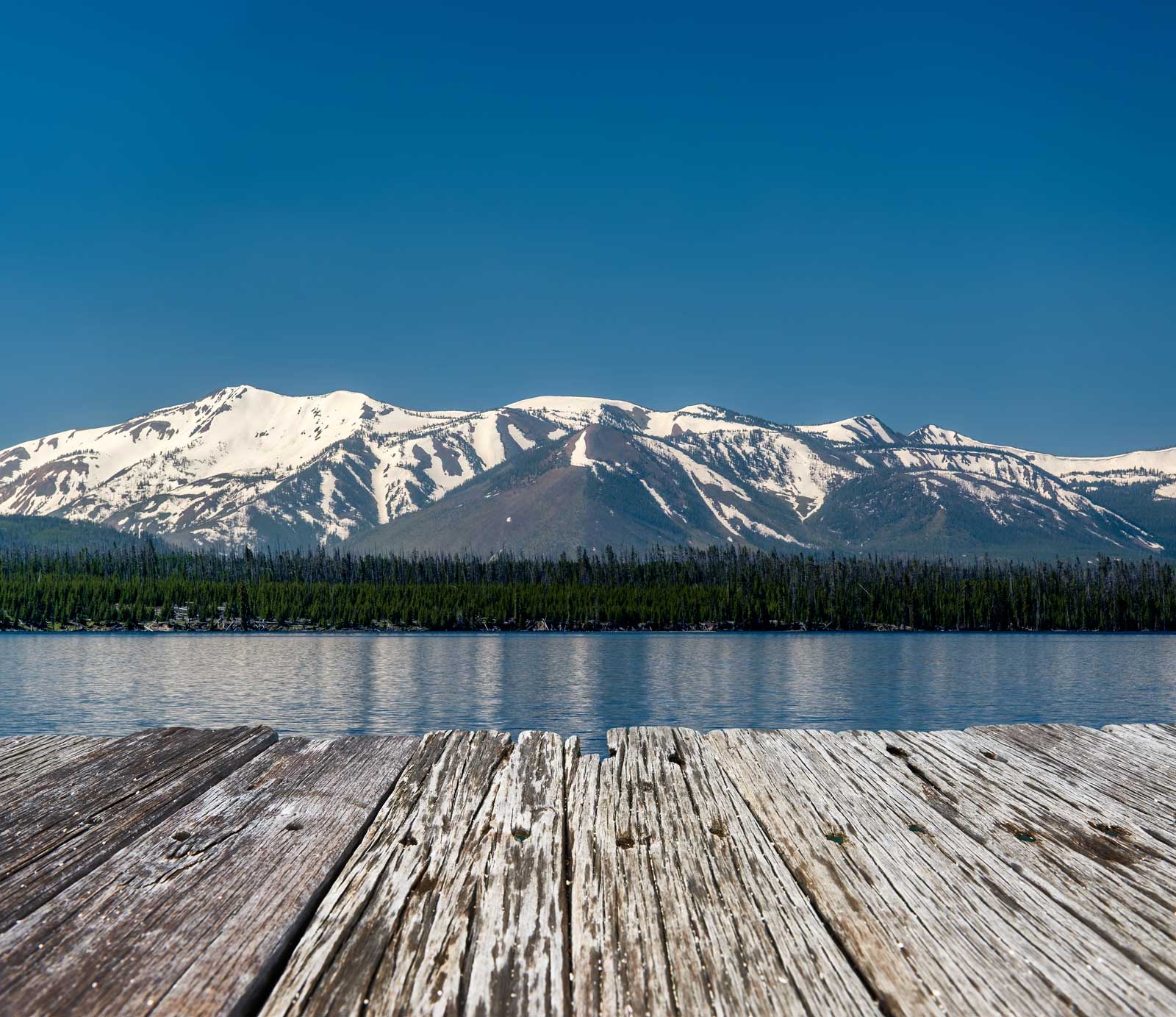
For some great Yellowstone hiking, you’ll want to get a look at the spectacular West Thumb of Yellowstone Lake, you’ll want to hike the Yellowstone Overlook Trail. You will start your hike off a West Thumb Geyser Basin Trailhead. The hike is approximately 1.6 miles with an elevation change of 200 feet.
Although it’s a short hike, there’s a lot of adventure to be had. There is a chance you’ll spot some bears and there are sulfur pools right at the top. You’ll also get a spectacular view of Absaroka Mountain Range.
The Yellow Stone River Valley, also known as Paradise Valley, runs through the range and falls down into the upper and lower falls of Yellowstone lake.
Trail Details
- Distance: 1.6 Miles (2.7 km)
- Difficulty: Moderate
- Elevation Gain: 200 ft (61m)
12. Yellowstone River Trail
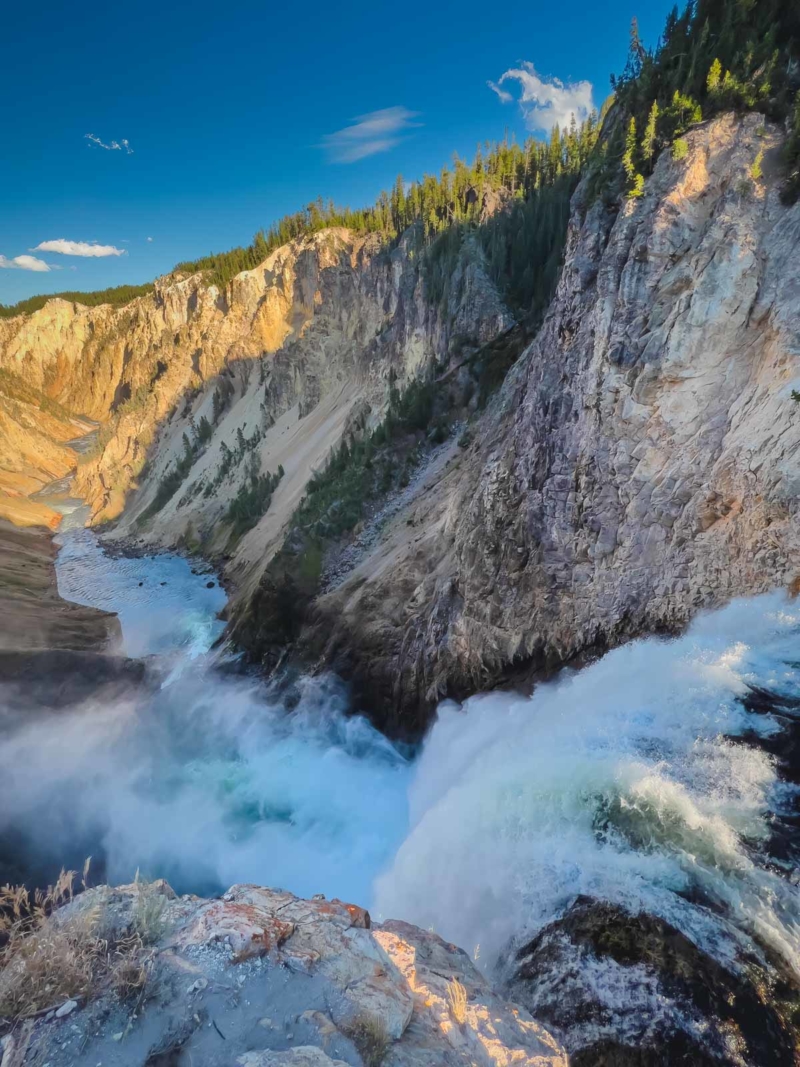
You can enter Yellowstone River Trail from Hellroaring Creek Trail. The Yellowstone River trail is 17 miles long with an elevation change of 1948 feet with beautiful views of the Yellowstone River canyon and Yellowstone River Valley.
This is considered one of the more difficult hiking trails at Yellowstone National Park. However, if you love big adventures, long hikes, and backcountry camping then this trail is a good bet. Remember to book your campsite in advance and be careful of fires and of attracting wildlife with open food containers.
If a park ranger finds you disobeying rules, you could be fined. Also, make sure you bring bear spray and a mosquito net for safety and comfort. Fun fact: You can even get a burger and a beer at the end of it at a burger joint called Corrals.
Trail Details
- Distance: 17 Miles (27.5 km)
- Difficulty: Difficult
- Elevation Gain: 1948 ft (594m)
Frequently Asked Questions
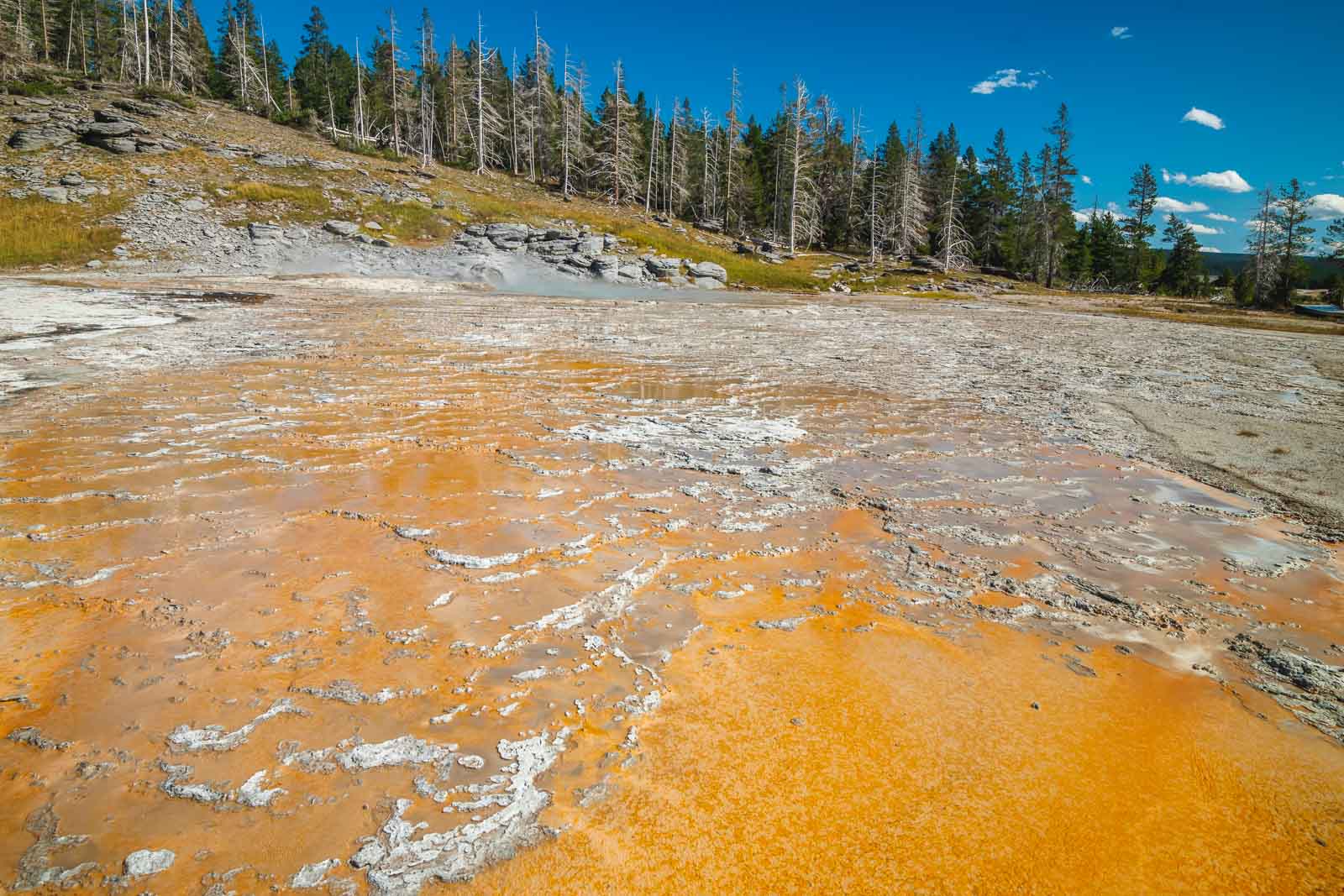
What is the best hike in Yellowstone?
The best hike in Yellowstone depends on what you are after. For example, the Geyser Basin trail is quite easy and the payoff is the living geyser that will erupt before your eyes. You can visit overlooks throughout the park, which require flat walks on paved roads. But Yellowstone hiking can also be complex like if you head out to Mount Washburn.
The Mount Washburn hike starts at Dunraven Pass Trailhead and is almost 6 miles from the trail leads and back. It is also where you may encounter grizzly bears and deal with steep switchbacks. You also can check out an old fire tower here, according to the national parks service it’s the only one in the whole park that is open to the public. The national parks service website can give you more details on features in specific areas.
What should you not miss in Yellowstone National Park?
Uncle Tom’s Trail makes for a fun short hike. You get a chance to see Lower Falls very, very close on this short trail on the South Rim. The round trip is just 0.7 miles. There is a 500 feet elevation loss as you descend a staircase down to the falls.
There are 328 steps going down and it is a steep descent, coming up might be a little difficult. If all that seems like a few too many steps for you, you can also go to one of the overlooks to view the Lower Falls.
In addition to that, there are a lot of beautiful places to see like Lewis Lake, Shoshone Lake, Cathedral Rock, Osprey Falls, Trout Lake, the Grand Canyon of Yellowstone, and the hydrothermal Clear Lake. You also don’t want to miss the rolling hills and lodgepole pine forest of Mount Washburn.
Is there a lot of hiking in Yellowstone?
Yellowstone National Park is one of the best US national parks to travel to for an amazing hike. From the Continental Divide Trail to the Upper Geyser Basin Trail, you get all sorts of terrain and wildlife so it’s almost like hiking a few different parks.
Yellowstone National is also full of wildlife which makes hiking in Yellowstone National Park extra special. Some parts are even considered bear country so remember to carry your bear spray. You have the option of hiking very short trails that are just a half-mile long or you can hike trails that go on for miles.
For example, the Avalanche Peak hike is 2 miles long but has a 2100 steep ascent that makes it quite difficult. But when you get to the top, the views are unparallel, and very few people in the world will ever see them. There is a lot of hiking in Yellowstone but how you go about it is all up to you.
Is it dangerous to hike in Yellowstone?
Yellowstone National Park is no more dangerous to hike than the Rocky Mountains, Zion Park, or Grand Teton National Park. Yellowstone hikes have varying levels of difficulty so it is best to use the trail that is best suited to your experience level.
One thing to note is that there definitely is a lot of wildlife in the park. You should refresh yourself with national park service rules on how to behave around animals. It is also a good idea to pack bear spray for safety.
Explore More US National Park Hikes
- Yellowstone: Things to do in Yellowstone
- Colorado: 15 Best Hikes In Rocky Mountain National Park
- South Dakota: Badlands National Park Hikes And Things To Do
- Utah: 10 Best Hikes In Zion National Park, Utah
- California: Things To Do In Yosemite National Park

